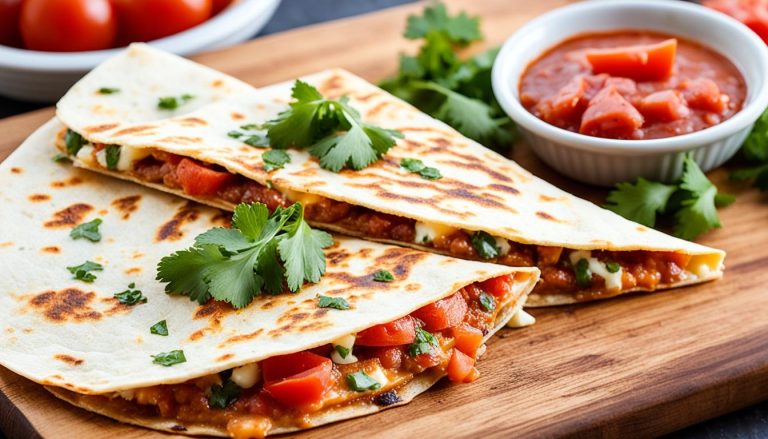As a seasoned home baker, I’ve discovered that mini egg cookies are the perfect blend of tradition and indulgence.
These vibrant treats combine soft, chewy dough with crunchy Cadbury Mini Eggs, making them ideal for Easter and spring celebrations.
Whether you’re baking with family or preparing festive gifts, this simple recipe delivers on both flavour and charm. Let me guide you through every step of creating these irresistible cookies.
What Is Mini Egg Cookies?

Mini egg cookies are a delightful twist on classic chocolate chip cookies, elevated with the vibrant charm of Cadbury Mini Eggs. These cookies have become a staple for spring baking, especially around Easter, due to their colourful, festive look and irresistible texture.
As someone who has been baking professionally for years, I’ve found that these cookies strike the perfect balance between chewy and crunchy, making them a seasonal favourite in many UK households.
The base dough is often soft and buttery, offering the perfect canvas for the rich chocolate and sugar-shelled eggs. Unlike traditional chocolate chip cookies, mini egg cookies offer bites of crunch from the candy shells alongside the gooey centre of melted chocolate. They’re not only gorgeous to look at but also fun to bake, especially with children.
Whether you’re hosting an Easter gathering, preparing treats for your little ones, or simply craving something sweet, mini egg cookies are the answer. The variety of recipes available, from American NYC-style thick cookies to simpler UK classics, means there’s a version for every baker, no matter your skill level.
These cookies are more than just a dessert, they’re a cheerful addition to your spring traditions.
Ingredients for Mini Egg Cookies
Here’s a detailed list of ingredients I use when baking my go-to mini egg cookies. These quantities yield about 12 large cookies. Always ensure your ingredients are at room temperature for the best results.
Ingredients Table
| Ingredient | Quantity | Purpose |
| Unsalted butter | 125g | For richness and softness |
| Light brown sugar | 100g | Adds moisture and a caramel flavour |
| Caster sugar | 75g | Helps with structure and sweetness |
| Plain flour | 250g | Provides structure |
| Baking powder | 1 tsp | Helps cookies rise slightly |
| Bicarbonate of soda | ½ tsp | Enhances spread and lift |
| Egg | 1 large | Binds ingredients |
| Vanilla extract | 1 tsp | Adds depth of flavour |
| Cadbury Mini Eggs | 200g | Main flavour and visual feature |
| Milk chocolate chips | 100g (optional) | For extra gooey chocolate bites |
| Sea salt (optional) | A pinch | Balances sweetness |
If you’re making these with children, pre-crushing the Mini Eggs with a rolling pin can be a fun task for little hands.
How Do I Make Soft and Chewy Mini Egg Cookies?

One of the biggest secrets to a perfect mini egg cookie lies in the method; getting the texture just right requires careful mixing and chilling.
Step-by-Step Baking Instructions
- Cream the butter and sugars until light and fluffy.
- Beat in the egg and vanilla until smooth.
- In a separate bowl, mix flour, baking powder, and bicarbonate of soda.
- Gradually fold the dry mixture into the wet ingredients.
- Gently stir in crushed Mini Eggs and chocolate chips.
- Chill the dough for at least 30 minutes. This helps stop the cookies from overspreading.
- Preheat the oven to 180°C (160°C fan) and line a tray with baking paper.
- Scoop dough balls and space them on the tray. Leave room for spreading.
- Bake for 10–12 minutes, or until the edges are golden and centres are still soft.
- Cool on the tray for 10 minutes before transferring to a wire rack.
Chilling is key here, it intensifies the flavour and improves the texture significantly.
Why Are Mini Egg Cookies Perfect for Easter and Spring Celebrations?
Easter baking is about more than just taste, it’s about colour, joy, and sharing. Mini egg cookies fit perfectly into this theme, thanks to the pastel hues of the Cadbury eggs and their delightful crunch.
Why They’re So Popular in Spring?
- Their colours mirror Easter decorations, making them visually festive.
- They’re easy for children to help bake, great for school holidays.
- They store well and can be made in advance for Easter parties or picnics.
- Mini eggs are typically seasonal, adding a sense of occasion.
Having baked countless batches for springtime events, I’ve noticed how these cookies are always the first to vanish from the table. They’re as much a decoration as they are a dessert.
What Makes Cadbury Mini Eggs the Best for Baking?
Cadbury Mini Eggs bring more than colour, they’re packed with quality milk chocolate encased in a sugar shell that doesn’t melt away in the oven.
Benefits of Using Cadbury Mini Eggs
- Their shell holds shape during baking, providing texture.
- The rich chocolate melts slightly for gooey pockets.
- Easily crushed for varied size pieces.
- Readily available in UK supermarkets before Easter.
While other brands offer chocolate mini eggs, Cadbury’s version remains the favourite for its flavour balance and iconic pastel look. I’ve tried baking with off-brand alternatives, but nothing quite compares.
How Long Do Mini Egg Cookies Stay Fresh?

Freshness depends on storage. When properly stored in an airtight container, mini egg cookies can stay delicious for days.
Storage Tips
- Store in a sealed tin at room temperature for up to 5 days.
- Freeze baked cookies for up to 3 months.
- Freeze unbaked dough balls for quick baking later.
To refresh frozen cookies, reheat them in a low oven (around 150°C) for 5 minutes to restore their softness. This method is perfect if you want fresh cookies without starting from scratch.
Can I Freeze Mini Egg Cookies for Later?
Absolutely, and I do it often. Freezing lets you enjoy fresh cookies on demand.
Freezing Instructions
- Freeze raw cookie dough balls on a baking tray.
- Once solid, transfer to a freezer bag.
- Label with the date and bake-from-frozen instructions (add 2–3 mins to bake time).
You can also freeze fully baked cookies. Wrap each one in cling film and freeze in a container. They defrost beautifully at room temperature.
What Are the Best Tips to Bake the Perfect Mini Egg Cookie Every Time?
I’ve baked hundreds of these over the years, and these tips always yield better results.
My Tried-and-Tested Tips
- Always chill the dough before baking.
- Don’t overbake; they’ll continue cooking as they cool.
- Use a mix of crushed and whole Mini Eggs for texture.
- Add a pinch of sea salt to enhance the chocolate flavour.
- For neater cookies, gently press the dough into shape before baking.
These small changes really elevate the final result.
Nutritional Information (Per Cookie – Approximate)
| Nutrient | Amount |
| Calories | 210 kcal |
| Carbohydrates | 28g |
| Sugars | 16g |
| Protein | 3g |
| Fat | 9g |
| Saturated Fat | 5g |
| Fibre | 1g |
| Salt | 0.3g |
Serving Suggestions

Mini egg cookies are delightfully versatile and can be served in a range of creative and comforting ways. Whether you’re entertaining guests, treating family, or gifting during Easter, these cookies always impress.
Warm with a scoop of vanilla ice cream
This is my personal favourite. Fresh out of the oven, the cookies are soft and slightly gooey, which pairs perfectly with the cold creaminess of classic vanilla ice cream. The contrast in temperature and texture makes it a decadent dessert.
On a platter with other Easter bakes
Displaying mini egg cookies alongside cupcakes, carrot cake slices, or hot cross buns creates a beautiful and festive Easter spread. Their colourful candy shells naturally brighten up the presentation.
Wrapped in cellophane as Easter gifts
Homemade cookies are a thoughtful and charming alternative to shop-bought Easter eggs. Simply wrap a few in clear cellophane, tie with a pastel ribbon, and add a gift tag. Ideal for teachers, neighbours, or party favours.
With a glass of milk or a cup of tea
Sometimes, simplicity wins. A warm cookie and a comforting drink is all you need. These cookies pair just as well with traditional English tea as they do with a cold glass of milk, perfect for an afternoon treat.
How Can Kids Join in Making Mini Egg Cookies?
Baking with kids isn’t just fun, it’s educational and confidence-boosting.
Kid-Friendly Steps
- Let children crush the mini eggs (safely!)
- Teach them to scoop and shape dough balls
- Use fun cookie cutters for themed shapes
- Get them involved in counting, measuring, and stirring
These cookies are colourful and forgiving, so they’re perfect for first-time bakers.
Variations of Mini Egg Cookies
There’s more than one way to enjoy these festive treats. Across the UK, different baking styles offer their own take on the classic recipe.
Jane’s Patisserie Mini Egg Cookie
Jane’s version is known for its NYC-style thickness and chew. Her recipe uses:
- Higher flour content for structure
- Chilling for up to 1 hour
- More Mini Eggs and dark chocolate chunks
- Slightly higher oven temp for golden edges
I’ve tried this and it’s ideal for those who love bakery-style cookies with gooey centres.
NYC Mini Egg Cookies
NYC-style cookies are typically:
- Thick and chunky with crispy exteriors
- Loaded with mix-ins like chocolate chips and chopped mini eggs
- Made with cold butter to control the spread
They take longer to bake, around 12–14 minutes, but are deeply satisfying and indulgent.
BBC Good Food Mini Egg Cookies
BBC Good Food offers a simpler, lighter version:
- Quick prep time, no need to chill the dough
- Fewer ingredients, ideal for beginner bakers
- Slightly thinner cookies, perfect for kids
I recommend this recipe if you’re short on time but still want to create something lovely.
Conclusion
Mini egg cookies are more than just a seasonal treat, they’re a joyful expression of springtime baking. With their colourful shells, rich chocolate flavour, and soft, chewy texture, they never fail to impress.
Whether you follow a classic recipe or explore a variation, the result is always rewarding. I hope this guide has inspired you to bake your own batch and share the sweetness with those you love.
Frequently Asked Questions
Are mini egg cookies suitable for vegetarians?
Yes, if you’re using Cadbury Mini Eggs and standard cookie ingredients, they’re vegetarian-friendly.
Can I make these cookies gluten-free?
Absolutely, swap plain flour for a gluten-free blend. Add a ¼ tsp of xanthan gum if your blend doesn’t include it.
Can I use dark chocolate instead of milk?
Yes, dark chocolate pairs beautifully with the sweetness of the mini eggs.
How do I make the cookies thicker like NYC-style?
Use cold butter, chill the dough, and increase the flour slightly.
What can I substitute for Mini Eggs?
Try Smarties, M&Ms, or other sugar-coated chocolates—but be aware the taste will differ.
Should I crush or leave the mini eggs whole?
A mix of both is best: crushed for chocolate flavour, whole for texture and looks.
How do I know when they’re baked perfectly?
Edges should be golden, and centres slightly soft, they’ll set as they cool.

Mini Egg Cookies
Ingredients
- 125 g Unsalted butter For richness and softness
- 100 g Light brown sugar Adds moisture and a caramel flavour
- 75 g Caster sugar Helps with structure and sweetness
- 250 g Plain flour Provides structure
- 1 tsp Baking powder Helps cookies rise slightly
- 1/2 tsp Bicarbonate of soda Enhances spread and lift
- 1 large Egg Binds ingredients
- 1 tsp Vanilla extract Adds depth of flavour
- 200 g Cadbury Mini Eggs Main flavour and visual feature
- 100 g Milk chocolate chips optional For extra gooey chocolate bites
- Sea salt optional A pinch Balances sweetness
Instructions
- Cream the butter and sugars until light and fluffy.125 g Unsalted butter, 100 g Light brown sugar
- Beat in the egg and vanilla until smooth.1 large Egg, 1 tsp Vanilla extract
- In a separate bowl, mix flour, baking powder, and bicarbonate of soda.1 tsp Baking powder, 1/2 tsp Bicarbonate of soda, 250 g Plain flour
- Gradually fold the dry mixture into the wet ingredients.
- Gently stir in crushed Mini Eggs and chocolate chips.200 g Cadbury Mini Eggs, 100 g Milk chocolate chips
- Chill the dough for at least 30 minutes. This helps stop the cookies from overspreading.75 g Caster sugar, Sea salt
- Preheat the oven to 180°C (160°C fan) and line a tray with baking paper.
- Scoop dough balls and space them on the tray. Leave room for spreading.
- Bake for 10–12 minutes, or until the edges are golden and centres are still soft.
- Cool on the tray for 10 minutes before transferring to a wire rack.









